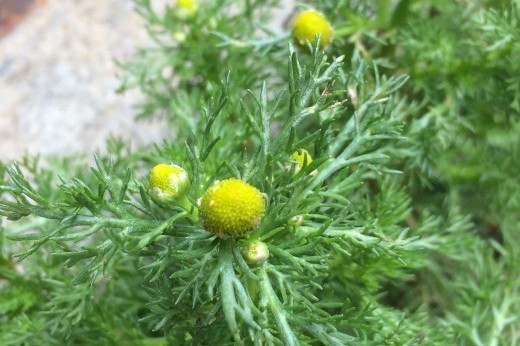The first summer at our new place, I noticed a few bottle-brushy stems growing between the cracks in the flagstone patio under our front deck. There weren’t too many, and they added an exotic flair to the bare pavers. I let them be.
The next spring, several charming lines of bamboo-like beige shoots tipped with little brown cones radiated out between the stones. After a few weeks they were replaced by bushy green stems, which eventually grew to about 20 inches tall and 4 to 6 inches across and died back at the first frost. Five years later, I no longer have a patio at all but instead a 10-by-12-foot bed of field horsetail (Equisetum arvense). This vigorous plant is now making incursions into the lawn and even the rock garden on the far side of the porch steps.
Field horsetail, also called common horsetail, can be found growing in moist, sunny conditions throughout most of the Northern Hemisphere. It is one of about 20 species of Equisetum, the only surviving genus of a lineage that dates back to huge, treelike relatives that thrived in the Carboniferous period, more than 300 million years ago. There are reasons why it’s been around so long.
Like many plants that get classified as weeds, field horsetail has a number of ways to propagate itself and survive. Similar to ferns, horsetails are primitive vascular plants that reproduce via spores rather than seeds. The spores of Equisetum arvense are formed on the conelike structure (strobilus) at the tip of jointed, off-white shoots that come up in early spring. Spores need moisture to germinate, but once a new plant has established itself, it can spread to drier soils.
As the fertile stems wither, the sterile, chlorophyll-producing secondary stems appear, covered with whorls of feathery green branches. The energy they gather through photosynthesis goes to underground tubers for storage, allowing horsetail to survive harsh winters and periods of drought.
Below the soil, fleshy, dark-colored rhizomes creep down and out, forming a deep-reaching, radiating system of new aerial shoots, roots, and food-storing tubers. Any node-bearing section of broken-off aerial stem or rhizome can generate a new plant, giving horsetails a leg up in soils where an existing colony has been broken up by weeding, plowing, or other disturbance.
All of these adaptations for survival make eradicating field horsetail a formidable challenge. The best strategy is to not allow this species to get a foothold in the first place. Failing that, try removing fertile stems in spring before they can release their spores. Then pull any green shoots as soon as they appear. Over a few years, this can eventually deplete the tubers and rhizomes and weaken the entire plant system.
Changing the plant’s growing conditions can also help. Horsetails like moisture, so improve drainage. They also like poor, acidic soil, so amend it with compost and manure and add lime to up the pH level. Herbicides are mostly ineffective and not recommended.
In my case, I’ve let the horsetails run free for too long to get rid of them. Fortunately, I like the way they look, and they’re not hurting anything much where they are now. I’ll pinch out the shoots that pop up in my rock garden and mow down ones that make it out to the lawn. And I’ll just make do without a patio.




